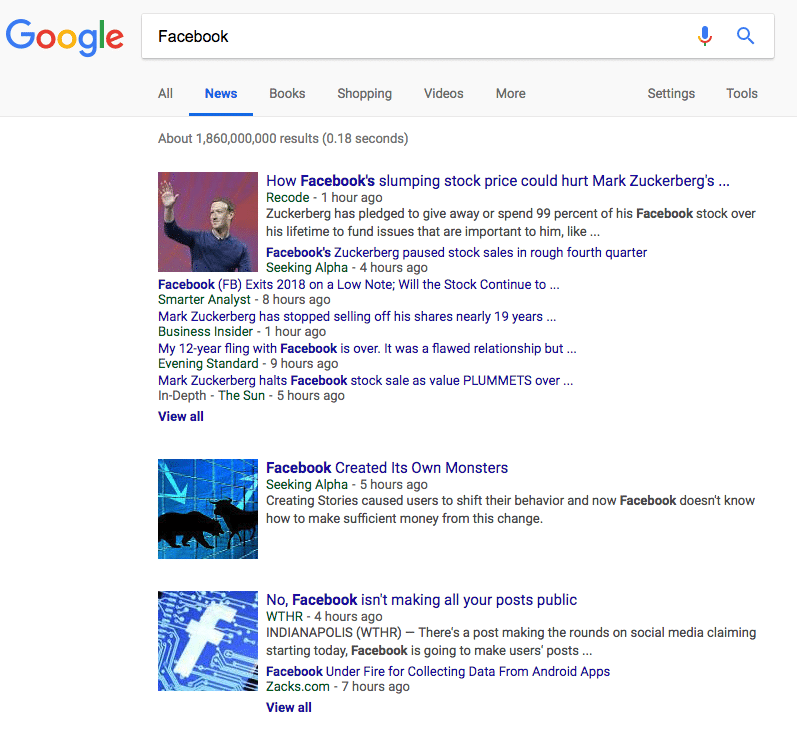
Understanding where your competitors stand in your industry can help you target unexplored markets or shift your brand position to resonate with more customers. Whether you are a new business, you are considering starting, or you are reassessing your market position for the new year, it’s important to know how to do a competitive analysis in 2019.
Make a copy of our competitive analysis template, and take a look at the example page to follow along with this blog post. With your copy, you can add in your own numbers, and make changes to the template as needed.
Competitive Analysis in 2019
Competitive analysis in 2019 requires more attention in different areas than competitive analyses of the past. For our 2019 competitive analysis, we’ll look at the core strengths and market position of competitors, but we’ll also look at the core elements of their digital marketing strategy. You’ll see these fields, as well as an example, in our competitive analysis template.
Now more than ever before, a company’s digital marketing strategy shows how they adapt to market shifts, how they reach new customers, and how they maintain their current customer base. Adding digital marketing elements to your competitive analysis will show unique market opportunities and threats through consumer trends, which traditional elements of a competitive analysis might not.
Brand Quality
The last two years provided extensive proof that widespread brand recognition does not always reflect positive feeling towards the brand.
A federal investigation and extensive public coverage of Facebook throughout 2018 might’ve increased brand awareness for the social media giant even further, though it certainly didn’t produce positive brand sentiment. When a passenger was forcibly removed from a United Airlines flight in 2017, news coverage and social mentions about the brand skyrocketed, but company goodwill plummeted. These are only two of the hundreds of recent examples of bad PR for big brands. This viral media environment will only grow wider and stronger this year, making brand recognition as well as brand quality important considerations for your competitive analysis in 2019.
Measure the brand quality of your closest and most significant competitors using data. You might use any of the following:
- Net Promoter Score (NPS)
- Star ratings
- Average ([Positive – Negative] / Total) customer comments
- Average ([Positive – Negative] / Total) news coverage
Whatever measurement makes the most sense for your business, be sure you’re using the same system for each competitor, or you’re analysis won’t be accurate. On our example page, we compared high-end hotel chains by their Net Promoter Score (NPS), which is generally an accurate gauge of customer sentiment.
Generally, companies that target smaller, niche markets or those that occupy the upper end of the price spectrum will have higher brand quality. High-end hotel chain Ritz-Carlton, shown in our example competitive analysis, has high brand quality shown in a high NPS score, which makes sense given their market position and price.
Price
Price points are one of the most important parts of your competitive analysis in 2019, or any year. The price your competitors select will show you a lot about their market position, including who they’re targeting, the size of their market, what they’re selling, and what their core value proposition is.
To find where your competitors lie on the price spectrum, find the highest and lowest available price across your entire industry. Then, for each competitor, find the average price of their products or services. This might mean a single price, a price range, median average, or mode average.
Keep in mind that prices are not always determined solely by businesses themselves. Secondary resellers sometimes step into markets with unequal supply, demand and price. This is often the case for concert tickets, hotel rooms or sports tickets. When comparing hoteliers in our example, we used prices on one booking site using the same type of room, in the same area, during the same dates.
Product Performance or Quality
Generally, but not always, products or services with high performance are more expensive and target customers who are willing to pay more. However, some brands leverage their high reputation to demand higher price points, even when the product is not functionally superior. Examining your competitors’ performance or quality will show you more about their market position; are they dependent on their brand recognition and customer loyalty, on exceptional performance, or perhaps both?
To analyze your competitors’ performance, take a close look at what the product or service actually is or does. Ask the following questions;
- What is the product made of? What does the service do/provide?
- Does it have uncommon or special features?
- What capabilities does it provide?
- Can it be used in special circumstances?
Make a list of all the possible advantages any competitors provide. Then, assign a number to each competitor according to the advantages they actually provide. This will allow you approximately rate each competitor according to their performance or quality.
In our example, we compared high-end hoteliers. We included included items like indoor/outdoor pools, spas, free high-speed internet, dining options, and other perks. We didn’t include items that customers would naturally expect from these accommodations, such as air conditioning and complementary shampoo, since these would be considered standard, not additional advantages.
Marketing Strategy
The three competitive analysis points above will give you essential information about your competitors’ market position, and show where opportunities in your industry exist. To conduct competitive analysis in 2019, it’s helpful to go one step further. Analyzing your competitors’ digital marketing strategy will show you how they leverage their market position. This will give you important information about the following:
- How your competitors gather leads
- Who those leads are
- How competitors nurture leads into customers
- A strategy for abandoned shopping carts or dead leads
- Key marketing elements, such as coupons and deals, information, or strong brand identity and design
To analyze your competitors’ digital marketing strategy, interact with the company as a customer would. Sign up for their emails, add a product to your shopping cart, download their lead magnets, or ask for a consultation.
Since this will take more time than other parts of the competitive analysis, you might use this only for your direct competitors. While the previous parts of your competitive analysis were number-based and quantitative, this part will be qualitative, and require written analysis to provide a summary of your competitor’s strategy.
From your marketing strategy analysis, you can determine how your closest competitors leverage their market position. What does your competitor do well? Where are they lacking? Who are they targeting and how are they doing it? Are they primarily using outbound or inbound marketing? Why would they choose this, and does that make sense? These questions will help you differentiate your marketing strategy and capitalize on opportunities.
Our competitive analysis template is a good starting point. The averages row can help you determine how competitors position themselves, and help you determine the high, low, and middle of the spectrum. You can add additional rows to study more competitors, or add columns to take more notes. Your competitive analysis may show ways you can shift your market position or change your marketing strategy to reach more customers and outcompete industry rivals. Once you’ve identified marketing opportunities, use our 2019 marketing budget template to start building a cost-effective plan.


